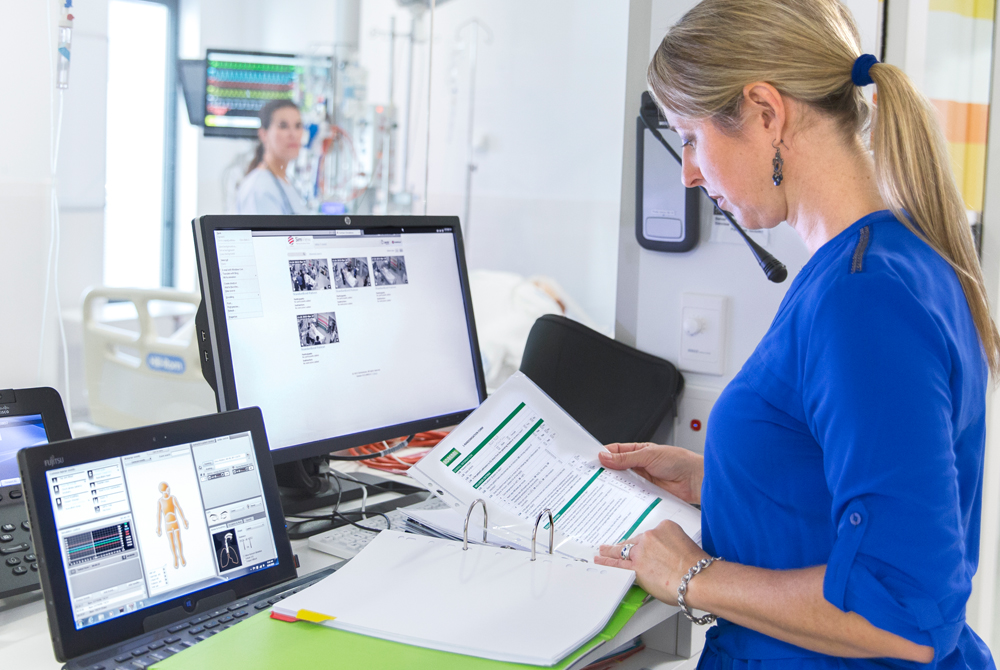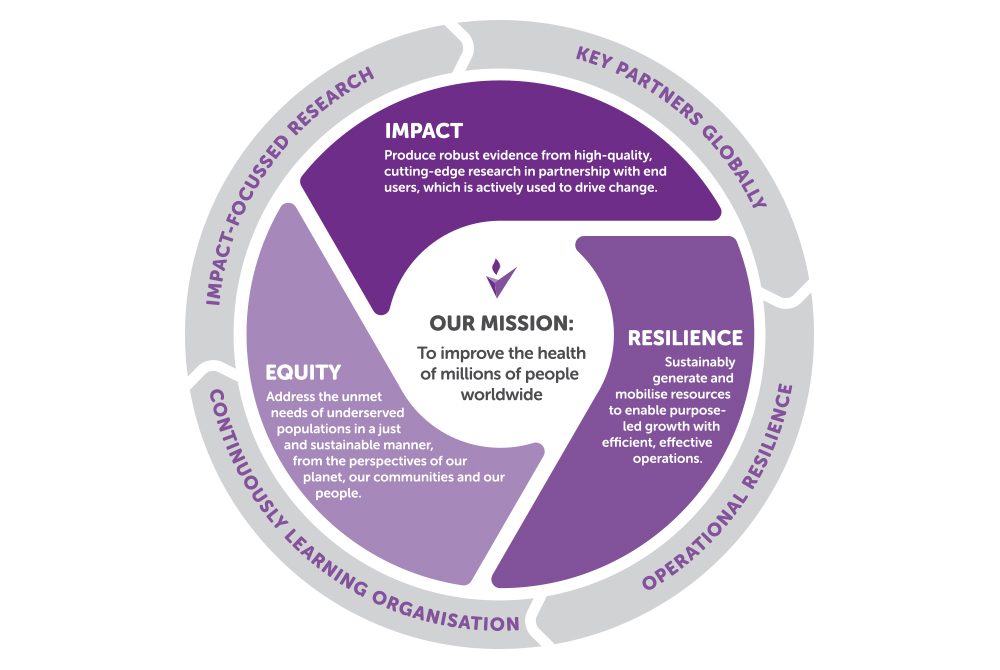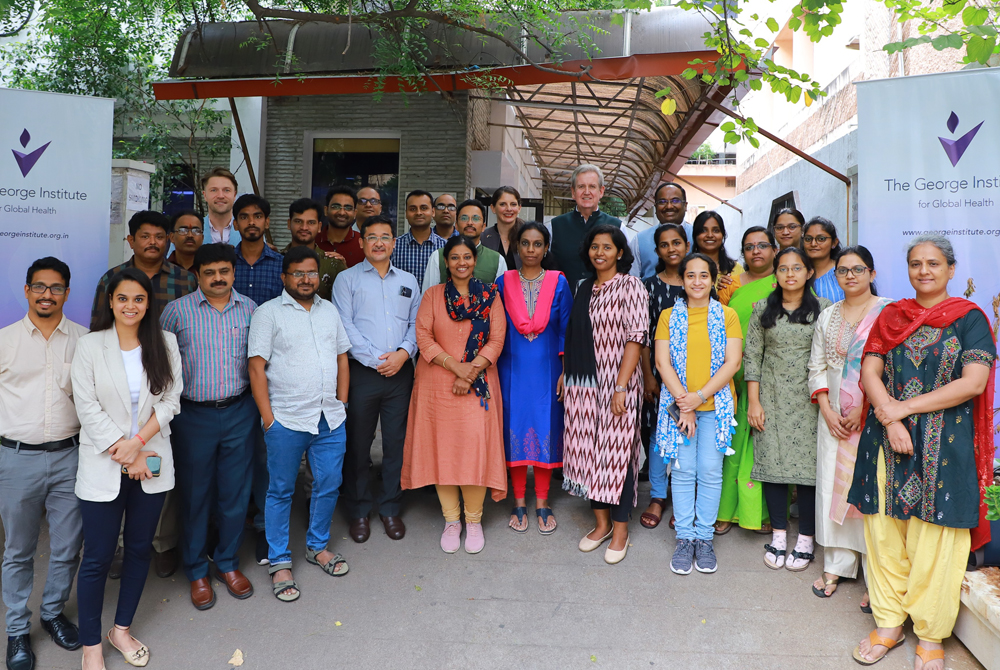About us
To improve the health of millions
of people worldwide.
At The George Institute, we believe everyone has the right to a healthy life. We are a research organisation that finds solutions to some of the world's biggest health challenges.
With major centres in Australia, the UK, China, and India, and over 245 active projects in more than 50 countries, we work with partners and communities across the world to conduct rigorous, high-quality research to make a real difference to people’s health, particularly those facing the most barriers.
From pioneering clinical trials to transformative digital health innovations, translating evidence into scalable solutions, shaping health policies and advocating for change, we’re focused on a future where health equity is a reality, not just an aspiration.
At the heart of our mission to improve the health of millions worldwide is a belief in the power of change. Together, we’re building a healthier, more just world.

the george institute at a glance
- 1249+ people
ACross 61 countries
- 405 projects
Across 61 countries
- 61 countries
where we have a presence
- 976+
publicatoins published

A plan for change
The George Institute’s mission comes to life through our Roadmap to 2030 - a plan to deliver better treatments, better care and healthier societies. Built on the principles of equity, resilience and impact, it sets the direction for our global health ambitions.
Key to our strategy is the emphasis on impactful, high-quality research founded on a deep understanding of the needs of our communities, so our projects are focused on what matters most to them.
Sustainable operations ensure we can continue our work while continually evolving with our world-class, diverse workforce supported by an inclusive culture that is founded in justice, equity and dignity.
Research with a purpose
Our research focuses on what matters most - people. We tackle the world’s biggest health challenges which currently cause the greatest loss of life and quality of life, particularly in communities facing the most barriers.
Using data, clinical trials, and innovation, we’re translating evidence into scalable solutions that deliver real-world impact. It’s our ongoing dedication to rigorous, high-quality research that makes this a reality.
Supporting this is our Centre for Operational and Research Excellence (CORE), which maintains the highest standards in data management, quality assurance, and research efficiency - all aimed at driving lasting change.


Transforming vision into impact
It’s not just our research - it’s how we approach it and turn it into action that makes a real difference. Our unique approach ensures that evidence creates real-world impact, with a strong focus on advocacy.
Collaboration is key - our consistent, sustainable and meaningful engagement with consumers and communities ensures we focus our efforts where they are most needed.
Combining our strong partnerships on the ground with our influence on the global health stage allows us to work with global policymakers to shape health policies and drive real change.
Discover more about us
Our people
Our work is powered by a diverse and dynamic team. From researchers and clinicians to emerging leaders in global health, every member of our team shares a passion for making a difference.
Learn moreOur affiliates and partners
We work with governments, NGOs, universities, and industry leaders to turn our ideas into action and create health solutions that matter to communities around the world.
Learn moreGovernance
Our leadership combines global skills and expertise with a shared commitment to health equity. Our Board of Directors and Global Advisory Committee ensure we remain focused, accountable, and transparent in our mission to improve health outcomes.
Learn moreOur innovation
We push boundaries to find better ways to prevent and treat disease. From groundbreaking clinical trials to the SMARThealth platform, our innovations are changing lives and transforming health systems.
Learn moreCareers
Are you interested in joining a team that’s changing the world? At The George Institute, you’ll work alongside inspiring people, tackle some of the world’s biggest health challenges, and contribute to a future where everybody has the chance to live a healthy life.
Learn moreSustainability
Our sustainability efforts focus not just on words but on action, we can make meaningful progress toward reducing our carbon footprint.
Learn moreA bold vision since 1999
The George Institute began in 1999 in Sydney, Australia, with a bold vision— to tackle the rising burden of non-communicable diseases and injuries worldwide. Partnering with the University of Sydney Medical School, we quickly expanded our focus to include global collaborations that brought research and innovation to communities in need.
In 2002, our work extended to India with the Andhra Pradesh Rural Health Initiative, followed by significant partnerships in China and the UK. Over the years, we’ve grown into a truly global institute, influencing health policies and transforming care through innovative programs and groundbreaking research.
Milestones like the collaborations with leading institutions worldwide, such as Oxford University, Imperial College London, UNSW Sydney, and Manipal University in India, have solidified our reputation as a global health leader. Recognised as one of the top research institutions worldwide, The George Institute continues to drive impact through science, advocacy, and innovation.
Today, with a presence in over 50 countries, our commitment remains the same— to improve health outcomes for millions, with a focus on those who need it the most.
Do you believe in a better, healthier world for all, regardless of circumstance?
Here is your chance to make a difference.


